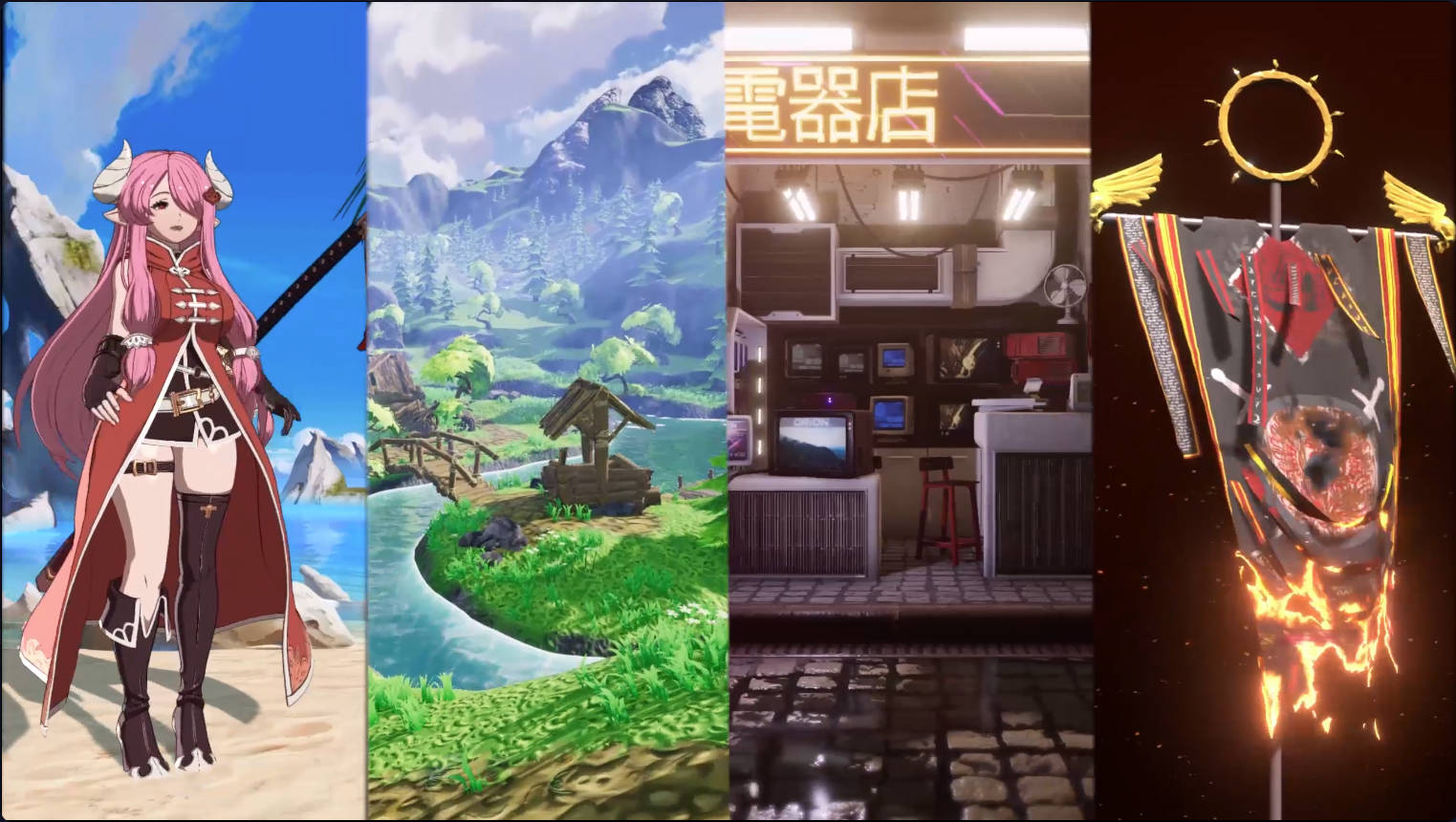添加修改屏幕分辨率的选项
Adventure Creator内置了对音量和字幕开关等基本选项的支持。然而,在为PC和Mac构建游戏时,可能需要添加更多选项,尤其是图形选项。
在这个高级教程中,我们将添加更改屏幕分辨率的功能,在游戏中作为一个自定义选项。我们将使用菜单、变量以及一些脚本。脚本编写将是非常基本的,但仍建议您事先掌握编码原则的基本知识,尽管完整的脚本仍全部展示出来。
可能的分辨率取决于用户的显示器。Unity在其Screen.resolutions中存储了可用选项的数组。
我们将使用一个整型变量来存储上述数组的当前索引。这将是一个全局变量,因此可以随时访问。
创建Global Variable
首先转到Variables Manager,并添加一个新的Global Variable。
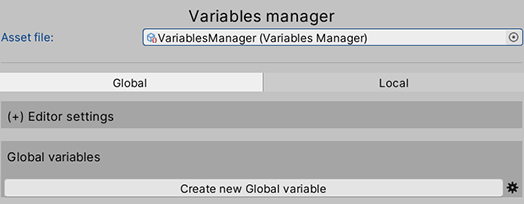
命名为ScreenResolution,Type设置为Integer,Initial Value为-1。如果发现它为负值,我们可以稍后编写脚本将其设置为正确的值。最后将Link to设置为Options Data。这将使其值在应用程序重新启动后仍然有效,并与保存的游戏文件分开。
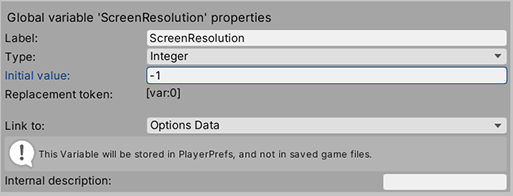
记下变量的ID号,因为我们在编写脚本时需要它。ID编号列在列表中其名称的左侧。
增加分辨率选项菜单
现在,我们准备修改选项菜单,以包含分辨率选项。本教程假设您已经有一个要使用的选项菜单-如果没有,您可以从Default_MenuManager资源文件中复制一个,如下所示:
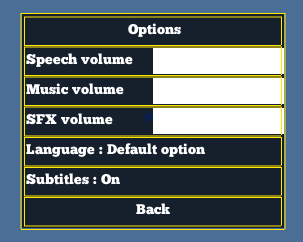
打开Menu Manager并选择Option菜单。在elements列表下,选择element type为Cycle,然后单击Add new。

Cycle element将允许玩家在多个值之间进行选择,在本例中是各种分辨率。将其重命名为ScreenResolutionCycle,并重新设置其样式,使其与菜单的其余部分相匹配:(将这个element在列表中Move Up一下就能调换位置了,最后将element的size设为Manual:W:36,H:5)
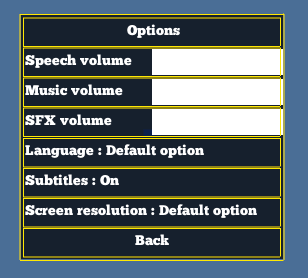
Cycle的值将链接到我们之前创建的Variable,因此将Cycle类型设置为Variable并选择ScreenResolution变量。
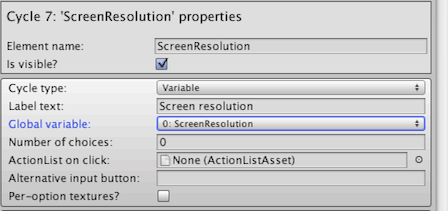
设置脚本
接下来,element的property为我们提供了空间,可以输入玩家可以循环使用的许多不同选项。然而,由于可用的分辨率会因玩家的显示设备而异,因此我们需要在运行时通过脚本设置这些值。
我们可以通过右键单击任何Manager字段的标签来获取该字段的API引用。将Number of choices设为1,并右键单击Choice #0字段标签以获得其API引用:
1 | (AC.PlayerMenus.GetElementWithName ("Options", "ScreenResolutionCycle") as AC.MenuCycle).optionsArray[0] |
我们可以使用这个,以及Unity的Screen.resolutions数组,编写相应生成选项标签的函数:
1 | void GenerateResolutionCycleOptions () |
我们还需要一个函数来设置ScreenResolution整数变量的正确值(如果发现它是-1):
1 | void InitResolutionVariable () |
一旦AC初始化,这两个函数最好在游戏开始时调用。在Project窗口中,创建一个名为SetupOptionsMenu.cs的新C#脚本,并给出以下内容:
1 | using UnityEngine; |
将其放置在游戏第一个场景中的空游戏对象上。如果您现在测试游戏并打开选项菜单,您会发现循环元素设置为游戏的当前分辨率,并且您可以单击显示器的每个可用分辨率。由于变量链接到Options Data,因此即使在退出并重新玩游戏后,也会记住更改。
创建自定义Action
然而,单击Cycle将不会影响实际的分辨率-要改变这一点,我们必须创建一个自定义Action。
从 Assets / AdventureCreator / Scripts / ActionList 文件夹内复制 ActionTemplate.cs,命名为ActionApplyResolution,并将其移动到新的文件夹中。
先修改类名
1 | [] |
修改属性
1 | public override ActionCategory Category { get { return ActionCategory.Engine; }} |
这个Action非常简单,不会涉及任何要更改的设置,也不会涉及任何编辑器中的GUI元素,因此我们只需要在Run()函数中编写代码即可。
当这个Action运行时,我们想读取ScreenResolution全局变量的值,并相应地设置游戏的分辨率。因此,首先,我们将定义一个新的整数chosenIndex,并将其设置为全局变量的当前值。然后,我们需要重新计算菜单以反映更新,然后返回一个浮点值零,表示操作完成。
将Run()函数替换为以下内容:
1 | public override float Run () |
我们的Action现在已经完成了——我们现在只需要将它插入Actions Manager,以便在ActionLists中使用它。将文件移动到资源目录中的新文件夹,然后转到Actions Manager。在“Custom Action scripts”面板中,单击文件夹图标并将窗口指向存储新Action的目录。确保该目录只包含Action脚本。然后,您会发现新的Action与其他Action一起列出。
现在,当玩家点击Cycle element时,我们就可以调用这个Action了。我们将把它放在一个ActionList Asset资源中,该资源可以在任何场景中调用。在“Project”窗口中选择适当的文件夹,然后选择“Create”→ Adventure Creator→ ActionList资产。

将此资源重命名为“Set resolution”,并在“Inspector”窗口中查看。单击Add new Action一次以创建新Action,并将Action类型设置为Engine:Apply resolution。

现在返回Menu Manager,选择ScreenResolution Cycle element,并将Set resolution ActionList指定为ActionList on click。
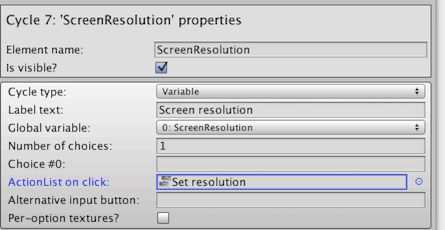
现在,当点击Cycle时,屏幕将自动设置为玩家选择的分辨率。我们现在只需要确保游戏在重新开始时保持这个分辨率。我们可以在开始游戏时将“Set resolution”资源设置为游戏的ActionList,如“Setting Manager”中所列:



